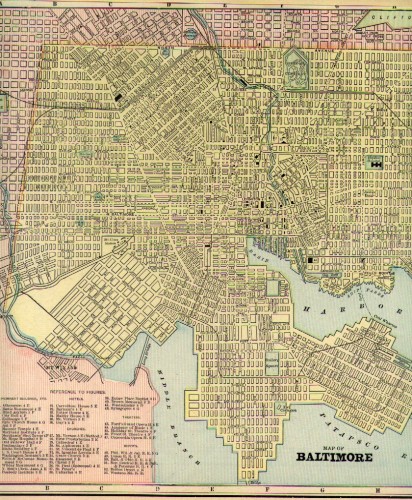 To my amazement, the Baltimore Sun managed to get some newspapers delivered earlier this week -- in between the record-shattering snow storms that keep rolling through the Mid-Atlantic region. As I type this, we are in the middle of storm No. 3. and, OMG, the word "snow" is in the Monday forecast.
As I dug into that thin Monday newspaper, I was struck by the power of a story that appeared under the headline, "One man's fight against redlining." Here's the top of that piece:
To my amazement, the Baltimore Sun managed to get some newspapers delivered earlier this week -- in between the record-shattering snow storms that keep rolling through the Mid-Atlantic region. As I type this, we are in the middle of storm No. 3. and, OMG, the word "snow" is in the Monday forecast.
As I dug into that thin Monday newspaper, I was struck by the power of a story that appeared under the headline, "One man's fight against redlining." Here's the top of that piece:
A small paid notice in Wednesday's Sun announced the death of Anne Irene Ruth Salzman at Charlestown Retirement Community. She was 97 and "was preceded in death by her husband of fifty years, Sidney Salzman," the notice said.
Missing was the rest of the story -- how the Salzmans in 1941 fought the Federal Housing Administration for the right to live in a neighborhood of their own choosing. Much has changed since then, but studies suggest that each year millions of Americans still face similar discrimination -- not by the government, perhaps, but by the real estate marketplace.
In 1941, Anne Salzman and her husband wanted to buy 821 Glen Allen Drive, one of seven foreclosed houses in Hunting Ridge, a neighborhood off Edmondson Avenue. Four years earlier, the federal government had prepared lending risk maps for Baltimore and 238 other American cities from coast to coast. It had given to Hunting Ridge its highest ranking, the same rating it bestowed on Guilford, Homeland and Rodgers Forge. Under federal guidelines, such mostly Protestant neighborhoods generally barred "inharmonious elements" -- African-Americans and Jews.
In Hunting Ridge, though, the homeowners' covenant against Jews had expired in 1940.
Sidney Salzman was Jewish and his wife was a Christian and they had always managed to live in Gentile neighborhoods. The bureaucrats were "not impressed."
Mr. Salzman decided to fight. He repeatedly offered purchase prices verbally suggested by FHA officials, proposing to put nearly half the money down. He was refused each time, even though he had been pre-approved for a mortgage, according to documents in the possession of University of Maryland, Baltimore County professor W. Edward Orser.
Finally, one official, "with evident embarrassment ... gave as reason for the turning down of my offer the fact of my Jewish extraction, that it was thought best not to sell one of these properties in a restricted neighborhood to me, that it might affect the sale of other properties, and that the [Charles] Steffey Co. real estate brokers handling the properties strenuously objected to such sale to me, on the same grounds."
And so the fight began, a pivotal fight in the history of race and religion in this city.
The Salzmans won the fight.
It's an amazing and important story.
So why did this story have to appear on the newspaper's op-ed page? Why did it need to end with this credit blurb?
Antero Pietila retired from The Sun after 35 years. His history of Baltimore, "Not in My Neighborhood: How Bigotry Shaped a Great American City," will be published later this month. He may be reached at www.anteropietila.com.
Please don't get me wrong. I am very glad that the newspaper ran this piece -- somewhere. However, the piece opens with a reference to factual material, to an event -- the death of Anne Irene Ruth Salzman -- that provided all of the news hook that was needed for a news feature.
This is a major story. Why wasn't it played out front, with photos and, online, some kind of video tribute to this couple and the role they played in the history of Baltimore? I assume that retired reporters can still receive or share bylines, or perhaps write sidebars to major stories. Why did this very important subject get shuffled over to the op-ed page? A quick search of the newspaper's web site found no other references to "Sidney Salzman."
This is an A1 news feature story if I have ever seen one.
